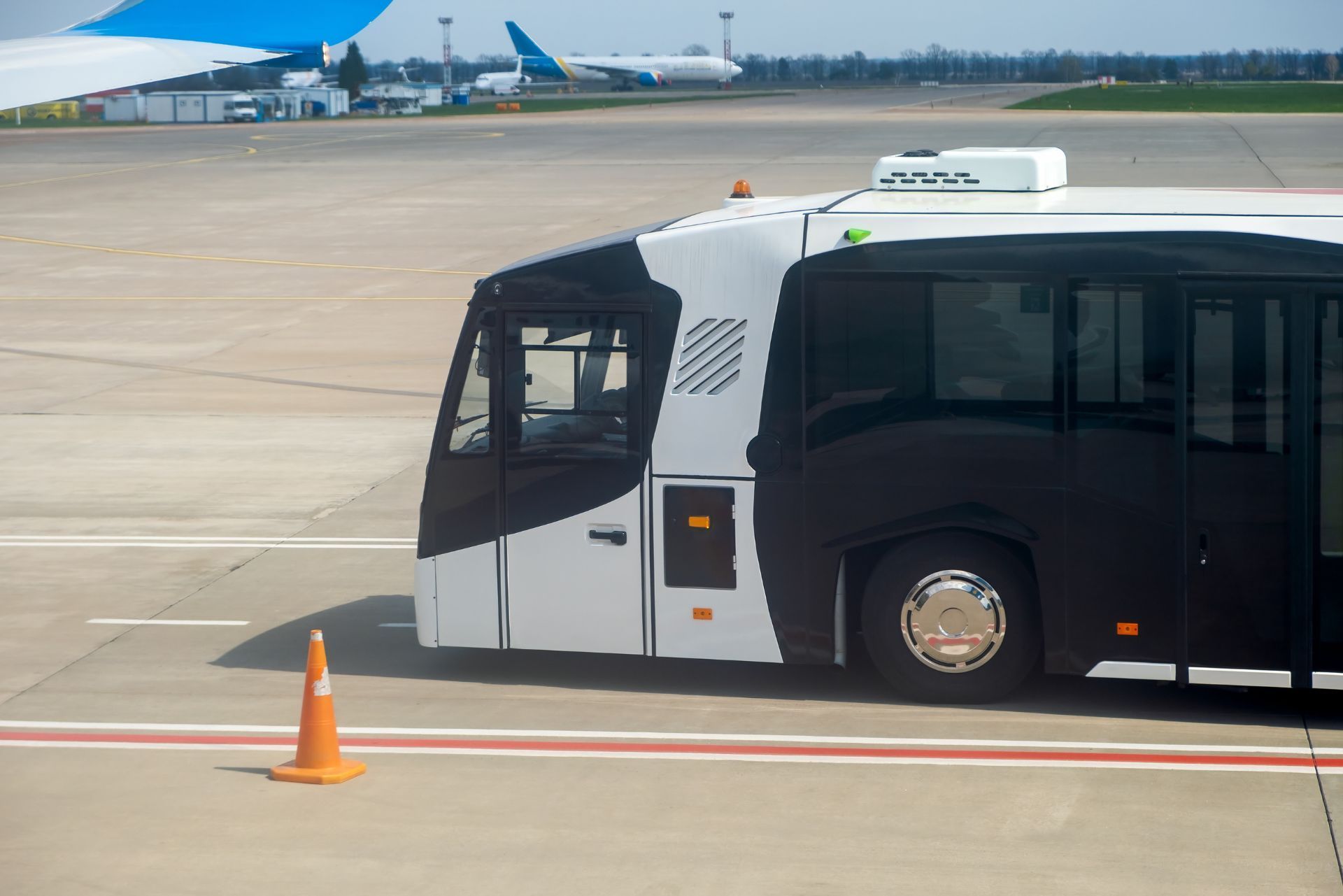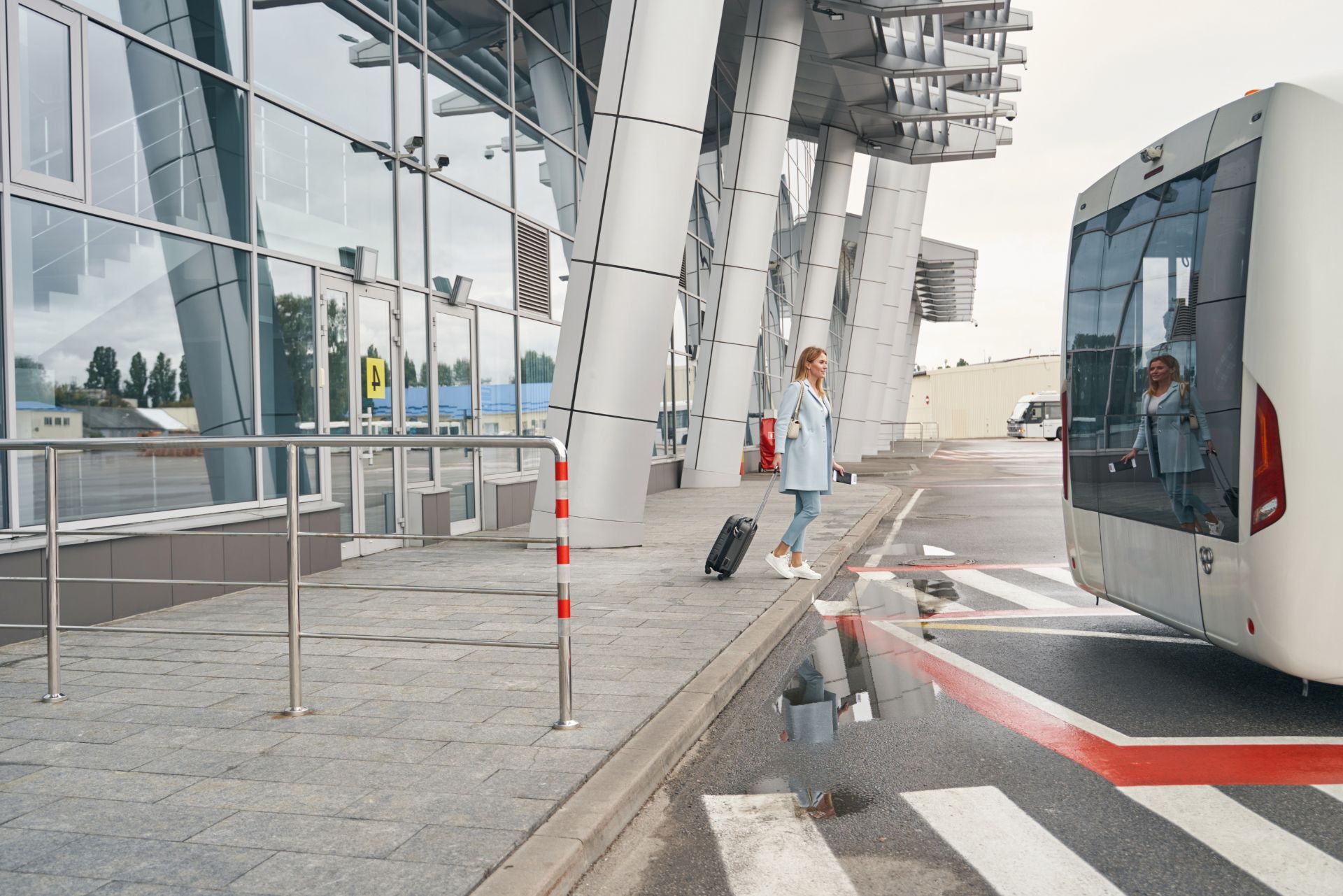California Airport Shuttle Insurance

9:00am - 6:00pm Mon-Fri
Will Reply in 15min*
Top 3 Recommended Policies
Index
Why Specialized Insurance is Crucial for Airport Shuttle Services
Understanding the Risks: Safety and Liability Concerns
Economic Trends Impacting Airport Shuttle Insurance Costs
Specialized Insurance Needs for Business Travel and Medical Evacuation
Choosing the Right Insurance Provider and Policy
Conclusion: Protecting Your California Airport Shuttle Business
Operating an airport shuttle service in California presents unique challenges and risks that require specialized insurance coverage. From navigating busy traffic near major hubs like LAX to managing the increasing costs of vehicle maintenance and regulatory compliance, shuttle operators must be well-prepared to protect their business and passengers. This comprehensive guide explores the essentials of California airport shuttle insurance, highlighting key considerations, industry trends, and regulatory factors that shuttle companies need to understand.
Given the complexity of fleet safety and the high stakes involved, insurance is more than just a formality—it’s a critical safeguard. According to the Federal Motor Carrier Safety Administration (FMCSA), the average cost of a large commercial vehicle crash is estimated at $91,000, underscoring the financial risks shuttle operators face daily.
Why Specialized Insurance is Crucial for Airport Shuttle Services
Airport shuttle companies operate in a high-risk environment, transporting passengers frequently through congested areas and often under tight schedules. Unlike typical passenger vehicles, shuttles are commercial vehicles that require insurance policies tailored to their unique operational risks.
Standard auto insurance policies rarely cover the full scope of liabilities associated with commercial shuttle operations. This includes passenger injury, vehicle damage, third-party property damage, and potential catastrophic events. Marcus Linden, CEO of CSE Insurance, emphasizes the importance of reinsurance in this sector, stating, “We clearly don’t have that kind of money sitting on our balance sheet or in our bank account,” referring to the necessity of spreading risk to cover large claims carriermanagement.com.
Moreover, shuttle operators must comply with state and federal regulations, which often mandate minimum insurance coverage levels. Failure to meet these requirements can result in hefty fines, legal liabilities, and even suspension of operating licenses. Additionally, the nature of airport shuttle services means that operators are often dealing with a diverse clientele, including tourists, business travelers, and families, each with varying needs and expectations. This variability increases the complexity of risk management, as operators must ensure that their insurance policies are comprehensive enough to address the unique challenges posed by different passenger demographics.
Furthermore, the operational landscape for airport shuttles is continually evolving, influenced by factors such as technological advancements and changing consumer preferences. For instance, the rise of ride-sharing services has led to increased competition, pushing shuttle companies to enhance their service offerings while also maintaining safety and reliability. This competitive pressure can lead to a greater emphasis on risk management strategies, including the need for specialized insurance that not only protects against traditional liabilities but also covers emerging risks associated with new technologies and operational models. As the industry adapts to these changes, the importance of having a robust and tailored insurance policy becomes even more evident, ensuring that shuttle operators can navigate the complexities of their business while safeguarding their assets and passengers alike.

Understanding the Risks: Safety and Liability Concerns
Safety remains a top priority for airport shuttle services, especially given the history of regulatory scrutiny. For example, in 1993, LAX shuttle services faced increased oversight after safety officials discovered numerous violations, including faulty brakes and bald tires latimes.com. While technology and regulations have evolved since then, the core risks remain significant. The introduction of more stringent safety protocols and regular inspections has become standard practice, aiming to mitigate these risks. Shuttle operators are now required to maintain detailed logs of vehicle maintenance and driver training, ensuring a higher level of accountability and safety in operations.
Accidents involving commercial shuttles can lead to costly bodily injury claims. However, advances in vehicle technology, particularly autonomous driving systems, are beginning to reshape the landscape. A 2023 study highlighted that Waymo’s autonomous vehicles experienced zero bodily injury claims over 3.8 million miles, compared to 1.11 claims per million miles for human drivers arxiv.org. While fully autonomous shuttles are not yet widespread, this data points to a future where safety improvements may reduce insurance premiums and liabilities. Furthermore, the integration of advanced driver-assistance systems (ADAS) in conventional shuttle vehicles is also contributing to enhanced safety measures. Features such as automatic emergency braking, lane-keeping assist, and collision avoidance systems are becoming commonplace, further reducing the likelihood of accidents and the associated claims.
Common Liability Coverage Types for Shuttle Operators
Liability insurance for airport shuttles typically includes coverage for:
- Passenger Injury: Protects against claims from passengers injured during transit.
- Third-Party Property Damage: Covers damage caused to other vehicles or property.
- Collision and Comprehensive: Covers damage to the shuttle vehicle itself from accidents, theft, or natural disasters.
Given the high cost of claims, comprehensive coverage is essential to avoid devastating financial losses. In addition to these standard coverages, shuttle operators may also consider adding uninsured/underinsured motorist coverage to protect against accidents involving drivers who lack adequate insurance. This is particularly important in urban areas where traffic congestion increases the likelihood of collisions. Moreover, as the industry evolves, shuttle services are also exploring specialized insurance products that address unique risks associated with ride-sharing and on-demand services, ensuring that they remain protected in a rapidly changing landscape.
Economic Trends Impacting Airport Shuttle Insurance Costs
The airport shuttle market in the U.S. is growing, with the average sales per company reaching $2.6 million in 2024. However, operating expenses have surged by 14.4%, driven by rising fuel costs, maintenance, and regulatory compliance researchandmarkets.com. These economic pressures directly affect insurance premiums, as insurers factor in increased operational costs and risk exposure. The competition among shuttle services is intensifying, prompting companies to explore innovative ways to enhance customer experience while managing costs. This includes investing in technology for efficient route planning and customer booking systems, which can ultimately affect their bottom line and insurance needs.
Additionally, California’s push toward sustainability is influencing fleet upgrades. The California Air Resources Board recently conducted a survey aimed at guiding regulatory measures for zero-emission airport shuttles, targeting vehicles with a Gross Vehicle Weight Rating (GVWR) of 8,501 pounds or greater ww2.arb.ca.gov. Transitioning to electric or hybrid shuttles may offer long-term savings on fuel and maintenance, but initial costs and insurance considerations remain significant. Moreover, as more companies adopt these eco-friendly vehicles, they may also benefit from potential tax incentives and rebates, further influencing their operational strategies and insurance planning.
Insurance Implications of Zero-Emission Shuttles
While zero-emission vehicles promise environmental benefits, insurers are still adapting to the unique risks associated with electric shuttle fleets. Battery technology, repair costs, and specialized maintenance can influence premium calculations. Operators should discuss these factors with their insurance providers to ensure adequate coverage. Furthermore, the evolving landscape of electric vehicle regulations and safety standards means that shuttle operators must stay informed about compliance requirements, which can also impact their insurance policies. As the market matures, insurers are likely to develop more tailored products that address the specific needs and risks of electric shuttle operations, potentially leading to more competitive pricing and coverage options for operators willing to embrace these advancements.
Specialized Insurance Needs for Business Travel and Medical Evacuation
Many airport shuttle companies serve clients in sectors with heightened insurance demands. For instance, businesses in California’s technology, entertainment, and finance industries often require business travel insurance due to frequent trips and high-value assets at stake finsuranceguide.com. Shuttle operators catering to these clients may need to offer or coordinate additional coverage options to meet expectations. This is particularly important as these industries frequently involve high-profile events and meetings, where the stakes are elevated, and any disruption can lead to significant financial losses.
Another growing area is medical evacuation coverage, particularly relevant in California where natural disasters and rising healthcare costs have increased traveler concerns. This coverage ensures rapid and safe transport to medical facilities in emergencies, adding a layer of protection for passengers and operators alike finsuranceguide.com. With the increasing frequency of wildfires, earthquakes, and other natural calamities, the demand for such services has surged, compelling shuttle companies to adapt their offerings to include this essential protection. Furthermore, the peace of mind that comes with knowing that medical evacuation is covered can enhance the overall travel experience, making it more appealing for corporate clients who prioritize employee safety.
How Medical Evacuation Coverage Enhances Shuttle Services
Including medical evacuation options can differentiate shuttle providers in a competitive market, offering peace of mind to passengers and corporate clients. It also demonstrates a commitment to safety and comprehensive risk management. By integrating these services, shuttle operators not only enhance their value proposition but also foster trust and loyalty among clients who may rely on them for critical transportation needs. Moreover, as companies increasingly focus on employee wellness and safety, offering such specialized insurance can be a significant selling point that attracts more business clientele.
Additionally, shuttle companies can leverage partnerships with medical evacuation services to streamline the process, ensuring that clients receive prompt assistance when needed. This collaboration can also lead to better pricing structures and more comprehensive service packages, making it easier for businesses to manage their travel logistics. In a world where corporate travel is often unpredictable, having a robust insurance framework in place can significantly mitigate risks and enhance operational efficiency, allowing companies to focus on their core objectives without the looming worry of unforeseen medical emergencies.
Choosing the Right Insurance Provider and Policy
Selecting an insurance provider experienced in commercial vehicle and shuttle coverage is critical. Policies should be tailored to the specific operational profile of the shuttle company, including fleet size, routes, passenger volume, and vehicle types. A one-size-fits-all approach often leads to gaps in coverage that can be financially detrimental in the event of an incident.
Key factors to consider include:
- Coverage Limits: Ensure limits meet or exceed regulatory requirements and potential claim sizes.
- Claims Handling: Choose insurers with a reputation for efficient and fair claims processing.
- Risk Management Support: Providers offering safety training, fleet monitoring, and loss prevention resources add value beyond the policy itself.
Given the potential for catastrophic losses, many shuttle operators also invest in reinsurance arrangements, spreading risk to protect their financial stability as noted by industry leaders. This strategy not only mitigates the impact of large claims but also fosters a more resilient business model, allowing operators to focus on service quality without the looming fear of financial ruin from unexpected incidents.
Furthermore, it is essential to evaluate the insurer's financial stability and customer service reputation. Researching ratings from independent agencies can provide insights into the insurer's ability to pay claims and their overall reliability. Engaging with other shuttle operators or industry associations can also yield valuable recommendations and firsthand experiences, ensuring that you choose a provider that aligns with your operational needs and values.

Conclusion: Protecting Your California Airport Shuttle Business
Operating an airport shuttle service in California involves navigating a complex web of safety, regulatory, and financial risks. Comprehensive and specialized insurance coverage is essential to safeguard your business, passengers, and assets against these challenges.
By understanding the unique risks of shuttle operations, staying informed about industry trends such as zero-emission vehicle adoption, and partnering with knowledgeable insurance providers, shuttle companies can build resilient operations that thrive in today’s dynamic market.
For shuttle operators seeking detailed insights into fleet safety and cost management, the
2023 State of Fleet Safety Report offers valuable data and recommendations to guide decision-making.



